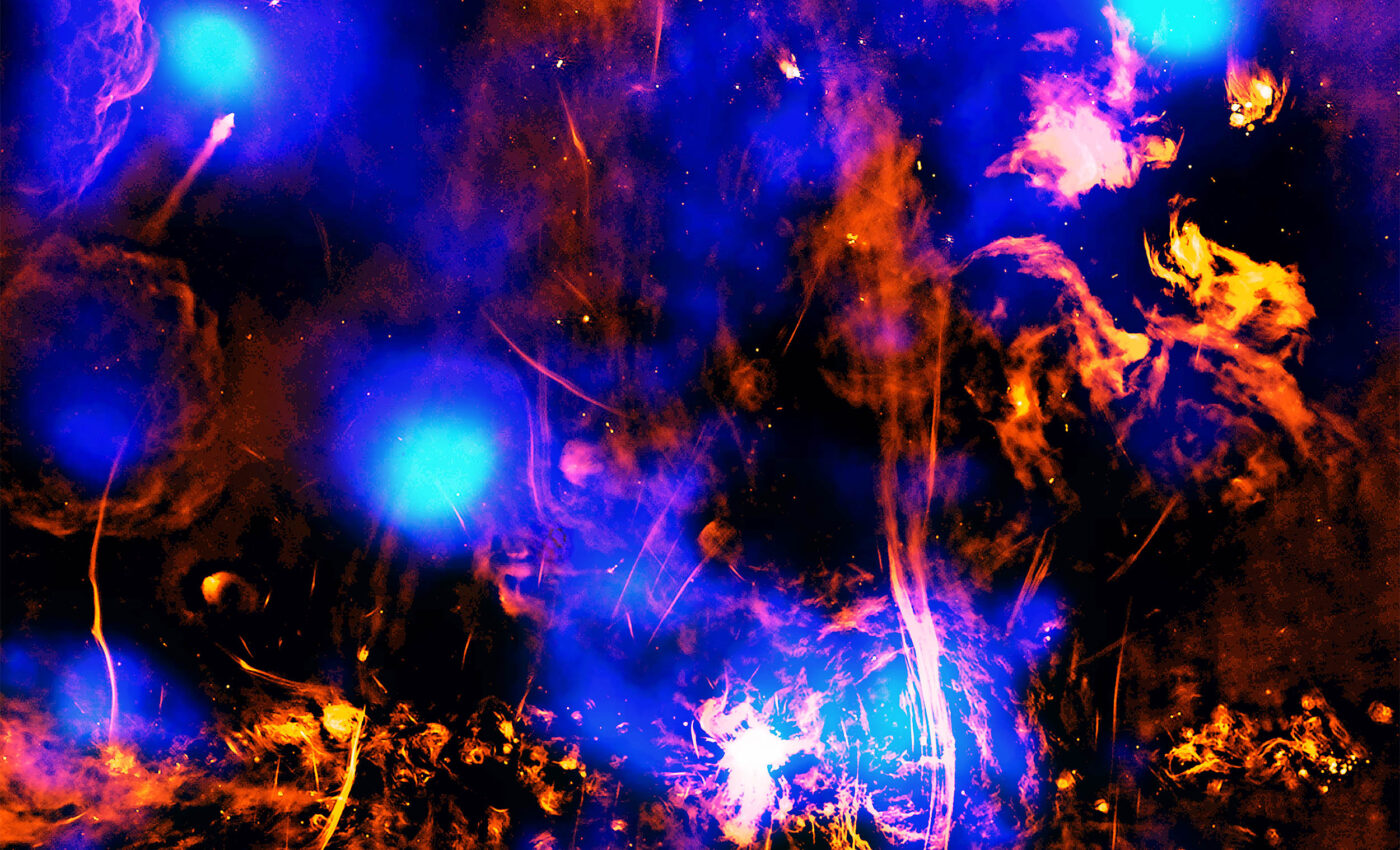
Cosmic 'chimney' found in the heart of our Milky Way galaxy
Astronomers using NASA’s Chandra X-ray Observatory have made an exciting discovery about the galactic structure at the heart of our Milky Way galaxy.
They’ve identified what appears to be a cosmic “chimney” that serves as an exhaust vent for hot gas. This chimney, extending about 26,000 light-years from Earth, starts at the galaxy’s center and is oriented perpendicular to the spiral disk of the Milky Way.
Venting from Sagittarius A*
The idea that eruptions from the supermassive black hole known as Sagittarius A*, or Sgr A* for short, might be driving this phenomenon is not new.
Indeed, these eruptions could be creating both the chimney and its associated vent.
The chimney itself was previously detected using X-ray data from Chandra and XMM-Newton, a mission by the European Space Agency with NASA contributions.
It was further explored recently with the MeerKAT radio telescope, which illustrated the role of magnetic fields in shaping this structure.
Closer look at Milky Way galaxy exhaust
Recent observations from the Chandra X-ray Observatory revealed several X-ray ridges running roughly perpendicular to the plane of the galaxy. These ridges are thought to be the walls of a cylindrical tunnel that channels the hot galactic gas upward.
Approximately 700 light-years from the galaxy’s center, near the top of this chimney, is the newly discovered vent.
“We suspected that magnetic fields are acting as the walls of the chimney and that hot gas is traveling up through them, like smoke,” explained Scott Mackey of the University of Chicago, the lead author of the study. “Now we’ve discovered an exhaust vent near the top of the chimney.”
The brightness of the vent’s walls in X-rays is caused by shock waves generated when the rising hot gas collides with cooler gas. This collision is akin to the sonic booms produced by supersonic planes.
The left side of the vent is notably brighter, suggesting that gas there is striking the tunnel wall more directly and with greater force.
Origins of the venting process
The study’s authors propose that the hot gas likely originates from a series of events that start with material falling into Sgr A* and culminate with eruptions that drive the gas upwards through the chimney and out the vent. However, the frequency of these events remains unclear.
Previous research has shown that dramatic X-ray flares occur every few hundred years near the central black hole, and these could be crucial in propelling the hot gas through the vent.
Additionally, it’s estimated that the black hole captures and consumes a star every 20,000 years or so, leading to explosive releases of energy.
“We’re not sure if this energy and heat are stoked by a large amount of material being dumped onto Sgr A* at once, like a bunch of logs being dumped on a fire, or if it might come from multiple small loads being fed into the black hole similar to kindling being regularly tossed in,” commented Mark Morris of the University of California, Los Angeles (UCLA).
Linking Milky Way galaxy structures
This research not only sheds light on the chimney and vent but also provides insights into larger galactic phenomena.
The particles and energy observed in the vent hint at the origins of two massive structures around the galaxy’s center: the Fermi Bubbles and the eROSITA Bubbles.
Both detected in high-energy radiation, these structures extend thousands of light-years from the galaxy’s center and align with the chimney and a second X-ray chimney pointing in the opposite direction.
“The origin of the Fermi Bubbles and the eROSITA bubbles are some of the biggest mysteries faced by studies of the high energy radiation from our galaxy,” said Gabriele Ponti of the Italian National Institute of Astrophysics in Merate. “We’ve discovered a small structure that might play a large role in the creation of these gigantic bubbles.”
More about Sagittarius A*
Sagittarius A* (pronounced “Sagittarius A-star”) is a supermassive black hole that resides at the center of our galaxy, the Milky Way.
Sagittarius A* possesses a mass equivalent to about 4 million suns, all packed into a region smaller than the orbit of Mercury.
Despite its enormous mass, it is invisible to the naked eye because it does not emit any light. However, scientists have detected its presence through the powerful gravitational influence it exerts on nearby stars and gas clouds.
Observations
Astronomers have studied Sagittarius A* using various techniques, including radio telescopes and infrared observations. These studies have revealed that stars orbit around the black hole at incredible speeds, providing compelling evidence for its existence.
In 2019, the Event Horizon Telescope collaboration captured the first-ever image of a black hole’s event horizon, although this was not Sagittarius A* but rather the black hole at the center of the galaxy M87.
Importance
The study of Sagittarius A* helps scientists better understand the nature of black holes and their role in the formation and evolution of galaxies. It also provides insights into the extreme physics that occurs in the vicinity of these cosmic giants, where the laws of general relativity are put to the ultimate test.
In summary, this important research enhances our understanding of the complex dynamics at the center of the Milky Way and highlights the intricate interplay of forces that shape our galaxy.
The full study was published in the journal The Astrophysical Journal.
—–
Like what you read? Subscribe to our newsletter for engaging articles, exclusive content, and the latest updates.
Check us out on EarthSnap, a free app brought to you by Eric Ralls and Earth.com.
—–













